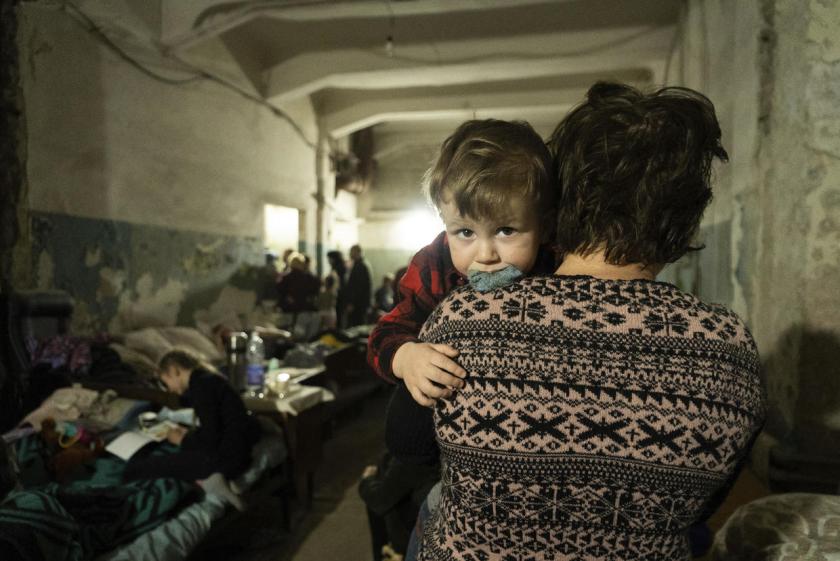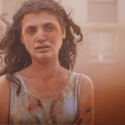Mstyslav Chernov’s 20 Days in Mariupol, which won the World Cinema Documentary Competition at Sundance this year, is an emotionally devastating account of the inhumanity of war.
The Ukrainian videographer and his team – stills photographer Evgeniy Maloletka and field producer Vasilisa Stepanenko – were trapped inside the eastern port city when it was besieged and shelled by the Russians last year. A brave and innovative visual storyteller, Chernov unblinkingly placed himself in harm’s way in order to capture the human stories behind the news footage of which, ironically, he was also the main supplier as the only broadcast journalist to witness the siege of Mariupol at first hand.
Now he has shaped the material into a feature-length documentary that is both fascinating and disturbing to watch because the scenes of death and destruction are laid out in montage without any self-conscious affect or drama.
The film unfolds events day by day, capturing the slow descent into a nightmare. A few hours after Vladimir Putin launched his full-scale invasion on 24 February 2022, the city is eerily quiet. “Wars don’t start with explosions, they start with silence,” Chernov says, in a flat, almost monotonous voiceover. Soon, however, Russian tanks emblazoned with the letter Z, a mysterious hand-painted sign of war, encircle the port. Fighter planes drop bombs on apartment buildings. Shells detonate and the camera shakes as “the noose tightens around the neck of the dying city.”
 Chernov and his crew take refuge in a hospital that is targeted by Russian artillery. In a way the building itself becomes a microcosm or symbol because, as Chernov remarks, “war is like a disease taking over the city.” People without limbs or with heavy injuries are lying on the floor, and there are close-up shots of bloodied bodies after a bombing that make every single death count.
Chernov and his crew take refuge in a hospital that is targeted by Russian artillery. In a way the building itself becomes a microcosm or symbol because, as Chernov remarks, “war is like a disease taking over the city.” People without limbs or with heavy injuries are lying on the floor, and there are close-up shots of bloodied bodies after a bombing that make every single death count.
A four-year-old girl, Evangelina, dies on a hospital trolley after being caught in an attack. A father weeps over his 16-year-old son, Ilya, who was killed when a shell landed on a playground where he was playing football with his friends. “Why? Why? Why?” screams a mother when the doctors, using a defibrillator, are unable to save her 18-month-old son, Kirill. One of them, in bloodstained scrubs, shouts at the camera: “Show that bastard Putin the eyes of this child!”
Once the hospital is surrounded it runs out of medicine. There is no power or internet, and the AP team struggle to locate a phone signal, so they are unable to send their photos and videos back to headquarters (“Note to editors: graphic content”). Brief clips from CNN or ITV News show how this raw jagged footage is used by broadcast media with an inevitable distancing effect.
Some of the most graphic content belongs to a centrepiece of the film, the bombing of the city’s Maternity Hospital No 3 on 9 March last year, which the Russians claimed had been faked by Chernov and Maloletka using actors. Images of a pregnant woman (pictured above) being carried out of the rubble on a stretcher (“Kill me!” she screams, because she knows her unborn child is already dead) are juxtaposed with footage of Russia's UN ambassador Vasily Nebenzya denouncing what he calls “information terrorism”.
Yet the message of the film, which has just been chosen as Ukraine’s entry for the Oscars, is ultimately one of hope: a policeman called Volodymyr stands in front of the bombed-out maternity hospital and speaks directly into Chernov’s camera, utterly confident in the power of images to stop the brutality of war. In order to get the AP footage to its worldwide audience, Volodomyr helps the journalists to evacuate from Mariupol, driving dozens of miles through occupied territory with their precious film cargo hidden under the seat. Unfortunately the footage didn’t stop the war but its depiction of human bravery and resilience is inspiring. Whatever Volodomyr or indeed Nebenzya, on opposite sides, make of 20 Days in Mariupol, it’s a must-see for everyone else.














Add comment